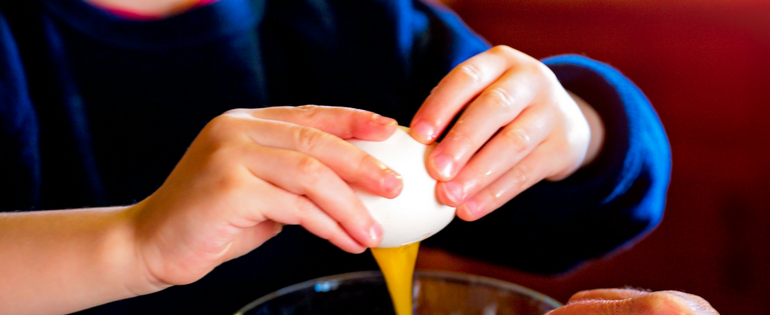Cooking is an essential skillset every individual wants to master one day to provide themselves with a delicious meal. Your children may still be young — but that doesn’t mean they can’t begin to finesse their skills in the kitchen! Cooking with your children not only helps provide your children with a better understanding of food and meals but also offers you a valuable bonding experience the whole family can engage in. Make sure to get your kids involved in the kitchen the next time you cook up a hearty meal with a few key ideas in mind.
Designate Your Children Jr. Chefs
Let’s face it — watching somebody prepare meals isn’t nearly as fun as actually cooking yourself. Get your children involved by establishing them as your assistant chefs. Assign them specific duties — such as stirring and mixing — to make them feel more involved in the cooking process. Help them establish their own cooking station by prepping their table with measuring cups, whisks, and bowls!
Make Your Meals Kid-Friendly
If this is your child’s first time assisting with a meal, make sure the result is a product they will be proud of – and eager to eat! Research kid-friendly recipes and use your ingredients in fun and innovate ways! Shape your foods into faces or turn your dinner into an image that resembles your child’s favorite animal. That doesn’t mean you have to forego indulging your taste buds for the night either. Prepare your favorite sweet Italian sausage meat and let your helpers take care of how it looks on the plate.
Pick the Menu Offerings Together
Now is the perfect time to introduce your children to new foods — with their help, of course! If your kids are picky eaters, expand their favored food list by adding new and fun menu offerings. For instance, if your youngster loves macaroni but you want to include an offering of meat, research quick sausage recipes that also include mac-n-cheese recipe.
Cooking With Safety
Cooking can be dangerous at times, especially when cutting, splashing and hot stoves are involved. Making your favorite cuisine doesn’t have to include the risk of injury or accident though! Keep yourself — and your Jr. chefs — safe by establishing a few kitchen “don’ts” and following some basic safety precautionary measures:
- Take Charge of Cutting. Depending on the age-range of your children, it may be best to assume authority over any cutting tasks. While kid-safe carving and cutting tools are available on the market, stronger foods such as vegetables and frozen meats require the use of a sharp-ended blade. Ensure your children’s safety by handling butcher-knife tasks.
- Keep Hot Substances Under Control. If you’re making a meal, you’ll inevitably find yourself using the stovetop, grill or oven. Avoid burns by educating your children on what not to touch in the kitchen in order to prevent injury.
- Prioritize Sanitization. Every parent knows how messy children can sometimes be. Make sure your children wash their hands before and after handling food. Cleanliness is especially important to keep in mind when handling substances such as raw meats. When cooking, your goal it is to keep freshness in and germs out.
Family Cooking Fun
Getting your children involved in the kitchen is a great way to introduce them to a valuable life-skill that will help them as they progress through life. With a few tips and tricks in mind, you help transform your little ones into Jr. chefs while preparing a meal the whole family will enjoy!
